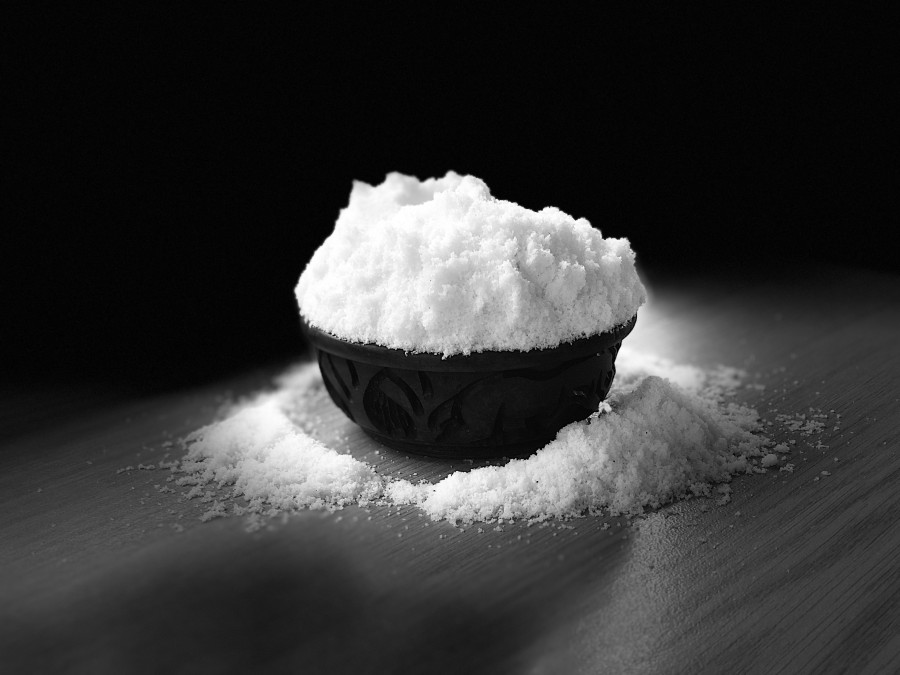Editorial
Go easy on the salt
Nepalis are consuming more iodine than is good for them.
Iodised salt is a kitchen staple that can help prevent iodine deficiency. When iodine requirements are not met, the thyroid may no longer be able to synthesise sufficient amounts of thyroid hormone. The thyroid hormones control the body's metabolism, temperature, proper bone and brain development during pregnancy and infancy. If the body fails to produce a sufficient amount of the hormone, a person may suffer from functional and developmental abnormalities.
Since iodine deficiency syndrome was a major health problem in Nepal, the government, in 1993, mandated that salt be fortified with iodine to prevent health problems, as the seasoning is used regularly throughout the year. But it seems that the plan is now showing its adverse effects. The Nepal National Micronutrient Status Survey 2016 jointly carried out by the World Health Organisation, UNICEF, and the US-based Centres for Disease Control and Prevention and the Ministry of Health and Population—have found that Nepalis are consuming an excessive amount of iodine. The survey reveals that over two-thirds of the population across the country is consuming iodine over the World Health Organisation recommended dosage of 15 to 40 parts per million per kilogramme of salt. Currently, the corporation adds iodine in a ratio of 50 ppm per kilogram of salt.
The first iodine deficiency disorders survey in Nepal was conducted in 1965. Then, Nepal’s total goitre rate stood at 55 percent. It was 44 percent in 1985 and by 2007, the rate had been drastically reduced to 0.4 percent. This is a commendable achievement. In fact, in 1973, Salt Trading Corporation was established to import iodised salt from India and distribute it throughout the country. This effort did change things. The household coverage of adequately iodised salt had increased from 55.2 percent in 1998 to a whopping 80 percent in 2011. According to a 2016 survey, 95 percent of children below five years of age consume iodised salt.
People not getting enough vitamins and minerals in their regular diet has been an enduring problem. In 2016, the Nepal Demographic and Health Survey showed that 53 percent of the children under five years of age suffered from anaemia, 36 percent suffered from stunting, 27 percent were underweight, and 10 percent suffered from wasting. Owing to this, the fortification of staple foods with essential vitamins and minerals has often been used to reach large numbers of people with vital nutrients. From flour to rice, the government has taken measures to supply its citizenry with the required nutrition. But these efforts are not a one-off thing. They need to be revised time and again.
The same goes for iodised salt. Granted, it did prevent many people from suffering from iodine deficiency disorders, but perhaps the iodine level could be revised. The government initially had added iodine in such large concentrations because it believed that much of the nutrient would be lost during long transportation or storage times. But with consumption increasing, along with easier transport access throughout the country, it is high time to reduce the concentration. Further, supplemental iodine could be used only in areas that are deficient in the element. The government could adopt proper packaging that clearly mentions the pros and cons of using too much iodised salt. Salt is used by everyone on a daily basis. One can't do without it, but too much of iodine could only backfire. It's time the government adopted corrective steps.
***
What do you think?
Dear reader, we’d like to hear from you. We regularly publish letters to the editor on contemporary issues or direct responses to something the Post has recently published. Please send your letters to [email protected] with "Letter to the Editor" in the subject line. Please include your name, location, and a contact address so one of our editors can reach out to you.




 17.12°C Kathmandu
17.12°C Kathmandu














